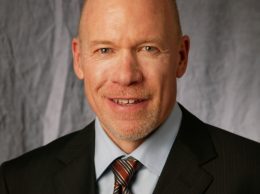Special Comment from the Editor: Jan. 2 rally could singal turning point
A curious aspect to the history of modern finance is the presence of substantial turning points. Often these are moments whose significance is not fully recognized until years, perhaps decades have passed.
But it’s also true that these turning points sometimes happen under extreme political or economic pressure—pressure that forces a substantial policy change.
Decisions such as the Bank of England’s decision to abandon the gold standard in the early 1930s or noted economist Henry Kaufman’s pronouncement in 1982 that interest rates were going to fall, triggered substantial market rallies.
When I was beginning my career as a reporter at the Springfield Morning Union in Massachusetts in the early 1980s, the Dow Jones Industrial Average stood at below 1,000 and the S&P 500 was below 100. I was in the newsroom at the Morning Union when Kaufman’s words hit the wire and his comments were widely recognized as the ultimate validation for Federal Reserve Chairman Paul Volker’s three-year battle against inflation, a battle that produced a viciously nasty double-dip recession.
Could the McConnell-Biden agreement to raise taxes on the wealthy be such a turning point? Many of my colleagues in the financial press are correctly skeptical.
Spending cuts and the debt ceiling debate lie ahead. And beyond that the question of a major tax overhaul. These are major policy issues that perhaps are of greater economic importance than what looks to be a less-than-perfect set of compromises on individual income taxes and a few other issues.
But turning points (and market bubbles, too) are difficult to recognize in the moment. Getting the Republican-controlled House of Representatives to agree to restore the top tax rates of the 1990s, a time of significant new business formation and economic growth, could be more important from a symbolic standpoint than market commentators realize.
In the wake Jan. 2 rally, the S&P 500 stands at roughly 1,450 and the Nasdaq composite index is roughly 3,100. (For the Nasdaq, that’s about 40 percent below it’s dot-com peak of more than 5,000.)
If this is such a turning point then the psychology that led to the Fiscal Cliff deal and the market rally will make it easier for Congress to find a path forward on entitlement reform, the debt ceiling and, perhaps, tax code revisions.
What impact that will have on market indexes remains to be seen. But the few foolish souls who looked at the nascent rally of the early 1980s and predicted the Dow could hit 10,000 before the end of the Century turned out to be quite prescient indeed.











